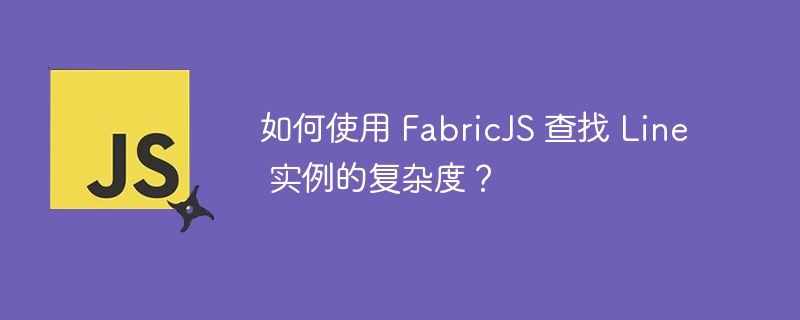

In this tutorial, we will learn how to find the complexity of a line using FabricJS. Line element is one of the basic elements provided in FabricJS. It is used to create straight lines. Since line elements are geometrically one-dimensional and contain no interiors, they are never filled. We can create a line object by creating an instance of fabric.Line, specifying the x and y coordinates of the line and adding it to the canvas. To get the complexity of a Line object, we use the complexity method. If the current object inherits directly from the base class rather than a subclass, this method will return 1.
complexity(): Number
Let’s look at a code example to see the complexity of getting a Line instance using complexity methods The recorded output. Complexity is 1 unless subcategorizing.
<!DOCTYPE html>
<html>
<head>
<!-- Adding the Fabric JS Library-->
<script src="https://cdnjs.cloudflare.com/ajax/libs/fabric.js/510/fabric.min.js"></script>
</head>
<body>
<h2>Using the complexity method</h2>
<p>You can open console from dev tools and see the logged output</p>
<canvas id="canvas"></canvas>
<script>
// Initiate a canvas instance
var canvas = new fabric.Canvas("canvas");
canvas.setWidth(document.body.scrollWidth);
canvas.setHeight(250);
// Initiate a Line object
var line = new fabric.Line([70, 100, 150, 200], {
stroke: "blue",
});
// Add it to the canvas
canvas.add(line);
// Using the complexity method
console.log("The complexity of Line instance is: ", line.complexity());
</script>
</body>
</html>
In this example, we use the complexity method to compare the complexity of a line instance and a polygon instance. You can open the console from the development tools to see the difference in complexity.
<!DOCTYPE html>
<html>
<head>
<!-- Adding the Fabric JS Library-->
<script src="https://cdnjs.cloudflare.com/ajax/libs/fabric.js/510/fabric.min.js"></script>
</head>
<body>
<h2>Using the complexity method to compare different objects</h2>
<p>You can open console from dev tools and see that the complexities are different
</p>
<canvas id="canvas"></canvas>
<script>
// Initiate a canvas instance
var canvas = new fabric.Canvas("canvas");
canvas.setWidth(document.body.scrollWidth);
canvas.setHeight(250);
// Initiate a Line object
var line = new fabric.Line([70, 100, 150, 200], {
stroke: "blue",
});
// Initiate a Polygon object
var polygon = new fabric.Polyline(
[
{ x: 50, y: 30 },
{ x: 105, y: 10 },
{ x: 160, y: 30 },
{ x: 100, y: 150 },
],
{
fill: "red",
left: 300,
top: 70,
}
);
// Add both to the canvas
canvas.add(line);
canvas.add(polygon);
// Using the complexity method
console.log("The complexity of Line instance is: ", line.complexity());
console.log(
"The complexity of Polygon instance is: ",
polygon.complexity()
);
</script>
</body>
</html>
The above is the detailed content of How to find the complexity of a Line instance using FabricJS?. For more information, please follow other related articles on the PHP Chinese website!




